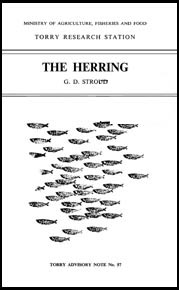Contents Index

Accompanying Notes
Table of Contents
G. D. STROUD
MINISTRY OF AGRICULTURE, FISHERIES AND FOOD
TORRY RESEARCH STATION
TORRY ADVISORY NOTE No. 57
Crown copyright material is reproduced with the permission of the Controller of Her Majesty's Stationery Office.
This electronic document has been scanned using optical character recognition (OCR) software and careful manual recorrection. Even if the quality of digitalisation is high, the FAO declines all responsibility for any discrepancies that may exist between the present document and its original printed version.
Provides general notes on herring, including common, scientific and foreign names, distinguishing features, size, weight and life history. The size of the herring catch has declined markedly since the Second World War. In 1998, landings in the UK by UK vessels were about 39,600 tonnes, i.e. only about 14% of the catch in 1938; the value was £4.9 million, about 2.5 times the value in 1938. Most of the herring currently landed in the UK is from large purse seine vessels fitted with refrigerated sea water tanks. Gives information on handling at sea and onshore, chilling, freezing, cold storage, smoking, canning, salting, marinating, by-products, shelf life, chemical composition, stowage rates and yields. In addition to the other Notes referenced in the text, Note 73 is relevant.
(FAO in partnership with Support unit for International Fisheries and Aquatic Research, SIFAR, 2001).
Introduction
Scientific names
Common names
Foreign names
Distinguishing features
Size
Weight
Geographical distribution
Life history
The fishery
Handling and transporting
herring
Herring processing
Chemical composition
Stowage rates and yields
Contents Index